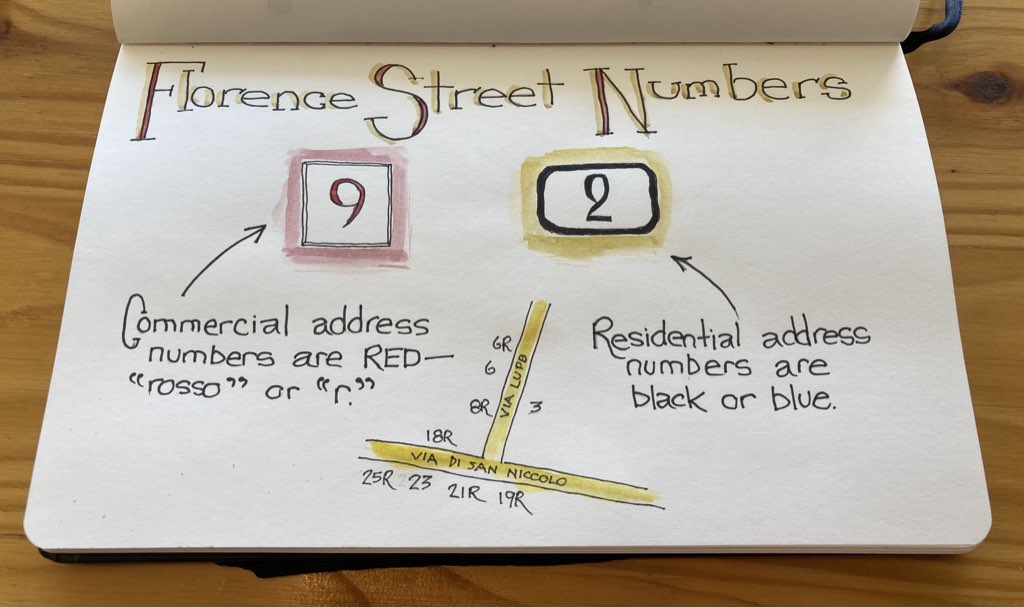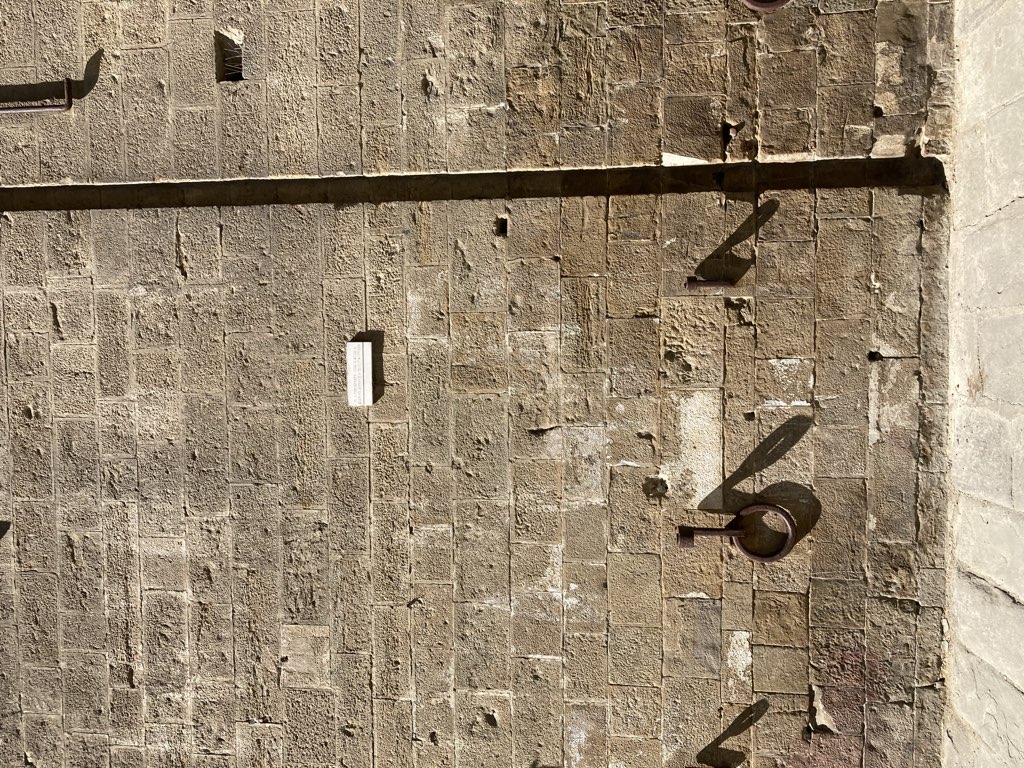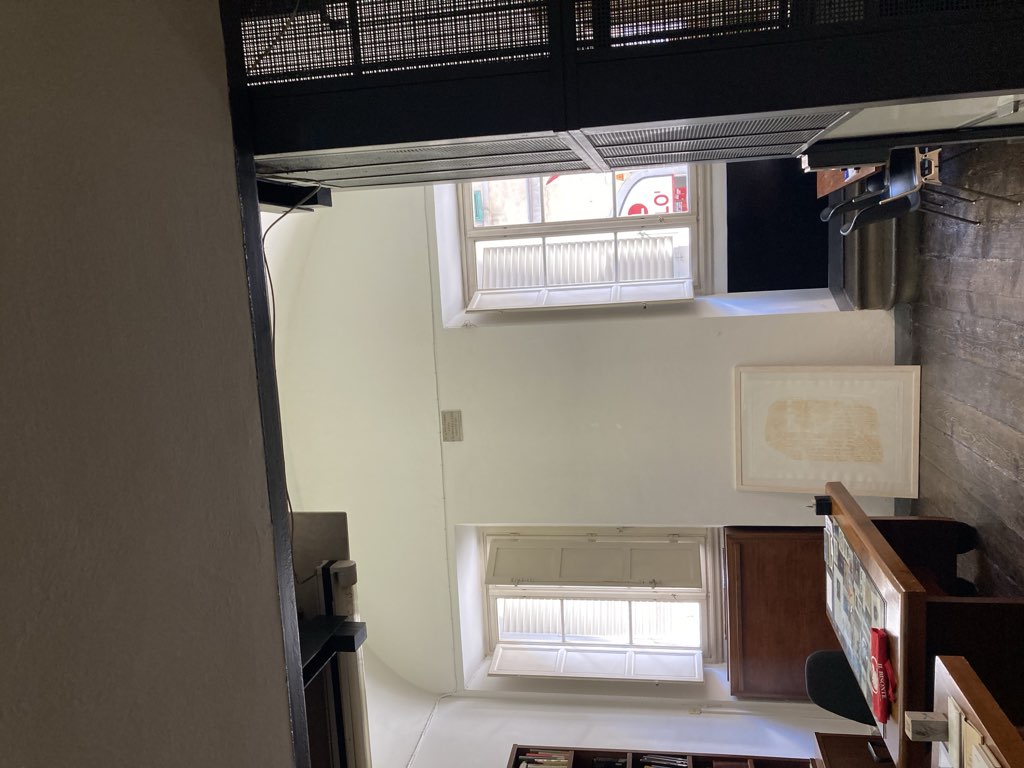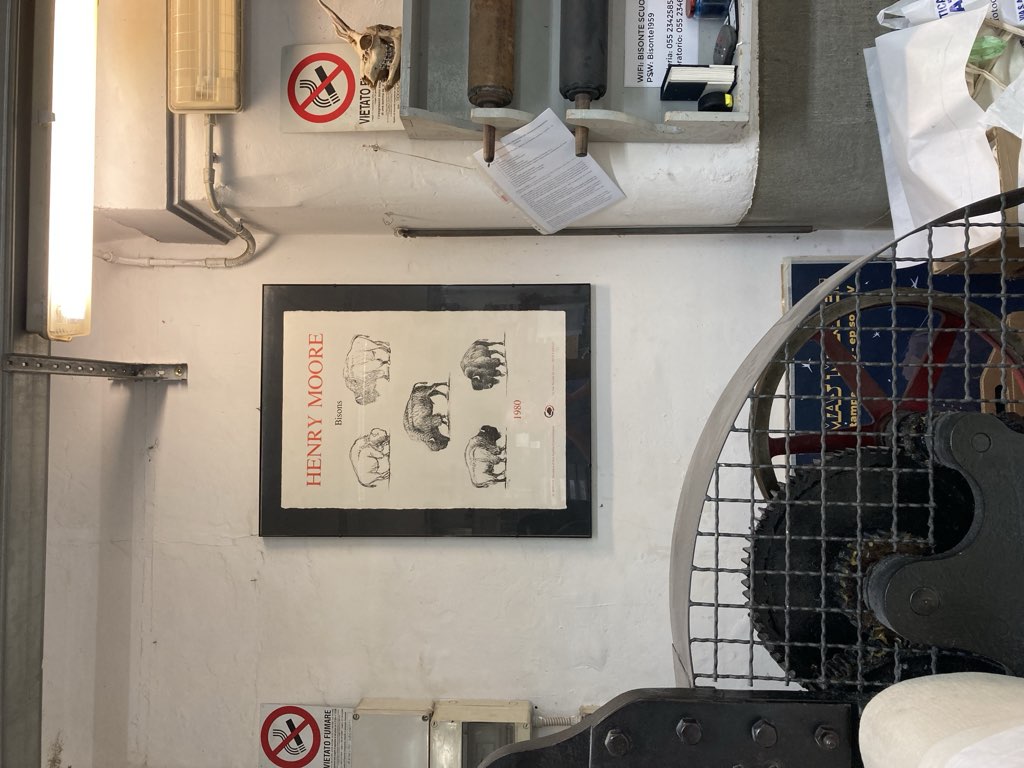Last week in Florence we went looking for Il Bisonte Foundation, a printmaking school in the neighbourhood we were staying.
We walked to Via San Niccolò 24, and… no printmaking school.
This is how we discovered that in Florence there are two sets of street numbers, black, for residences, and red, for commercial addresses.
We walked up the street a little to 24r and ended up having a lovely conversation and tour with curator Silvia Bellotti.

Lisa often marvels that about the things I ignore (often large and obvious things) and the things I notice (often small and insignificant things); one of the small things I noticed on the walk to Il Bisonte was a tiny plaque on the Torre San Niccoli:

The plaque says:
Il 4 Novembre 1966 l’acqua d’Arno arrivo a quest altezza
or, in English:
On 4 November 1966 the Arno water reached this height
The Arno is the river that runs through the heart of Florence and, we learned from Wikipedia, it flooded its banks in 1966, a cataclysmic event in the city:
The 1966 flood of the Arno in Florence killed 101 people and damaged or destroyed millions of masterpieces of art and rare books. It is considered the worst flood in the city’s history since 1557. With the combined effort of Italian and foreign volunteers alike, or angeli del fango (“Mud Angels”), many of these fine works have been restored. New methods in conservation were devised and restoration laboratories established. However, even decades later, much work remains to be done.
Later, during our tour of Il Bisonte with Silvia, I asked her if the Foundation had always been in the space she was showing us at 24r.
No, she told us, the after being founded elsewhere, the Foundation moved into its current space in… 1966. A few months before the flood. As described on the Foundation website:
The 4th of November 1966 was a turning-point in the history of Il Bisonte, the premises of which had just been moved to the old district of San Niccolò, where they are located still to this day. The premises were submersed by the Arno flood, Guaita saved herself by escaping through a window, and many works were badly damaged or even lost.
Silvia pointed out to us the same plaque on the wall inside their offices, showing the high water mark from November 4, 1966, which illustrated more than anything else how overwhelming the flood must have been:

One of the silver linings in the flood of Il Bisonte is that founder, Maria Luigia Guaita, reached out to artists around the world for support, and one who responded was Henry Moore:
Numerous artists offered their help in order to restore the activity of the printing house. Among them, Henry Moore realised famous etchings around the theme of the human figure. In 1972 Guaita managed to organise the first exhibition of Moore’s sculptures at the Forte Belvedere, and in that same period Il Bisonte hosted an exhibition of his graphic production.
Some of Moore’s work, along with those of many other printmakers, renowned and not, grace the walls of the Il Bisonte library:


Remember how I often notice small things and miss the big ones: it’s only now that I realize that, in English, Il Bisonte translates to The Bison. This serves to explain the frequent bison references I saw on the tour, including this one in the workshop:

Winnie Lim, in a recent post, quotes Oliver Burkeman from You Can’t Hoard Life:
Spending your days trying to get experiences “under your belt”, in an effort to maximise your collection of experiences, or to feel more confident about the future supply of similar experiences, means placing yourself in a position from which you can never enjoy them fully, because there’s a different agenda at play.
When I think about our month in Europe, it’s times like our afternoon at Il Bisonte that I remember most fondly, experiences that simply emerged slowly from wandering and paying attention. We were at our worst when we did what Burkeman describes as clenching — “an attempt to grasp the moment and bring it under my ownership” — relentlessly trying to pursue things (the perfect place to stay, the perfect restaurant, the perfect view, the perfect thing to see in any given city).
We visited Florence. We didn’t visit David. We didn’t tour the Uffizi. We didn’t climb the Duomo.
But we learned about two sets of street numbers, had a lovely tour of a printmaking school, and learned about a singular event in the city’s history. That is how I love to travel.
 I am
I am
Comments
Ah, signage!
Ah, signage!
Lovely recollection, and of
Lovely recollection, and of course, everything connects. On my very first “grown-up” holiday in Italy in 1972, we did a day trip to Florence (from Bagni di Lucca) that included the Henry Moore show at the Belvedere and Pizzeria Piccadilly, which is still there, and where I first came across the perfection of ready-made fresh fruit salad, though I still don’t really know why it is called una macedonia. I don’t believe Wikipedia on the subject.
I had always wrongly assumed
I had always wrongly assumed that Moore was Canadian, as the Art Gallery of Ontario—a frequent school field trip destination—has a sizeable collection of his work.
The novel "Still Life" by
The novel "Still Life" by Sarah Winman gives an account of the 1966 flood. Seeing those high water markers certainly gives quite a visual reference.
I love Florence. It sounds like you found some magic there.
Thank you, Janice. I’ve put a
Thank you, Janice. I’ve put a copy on hold at the Charlottetown library.
Add new comment